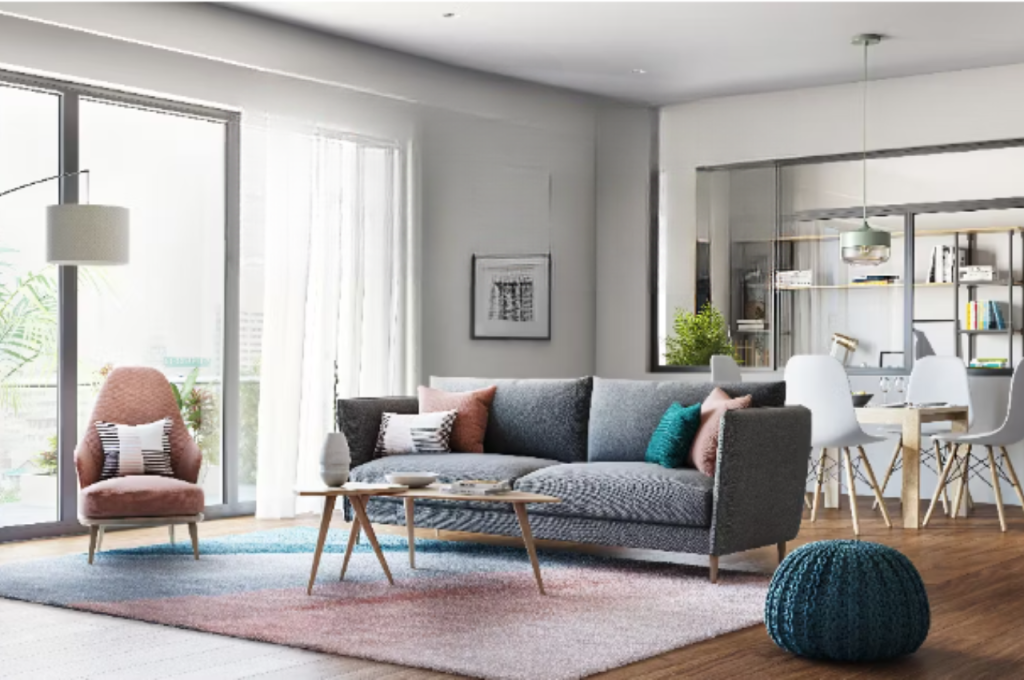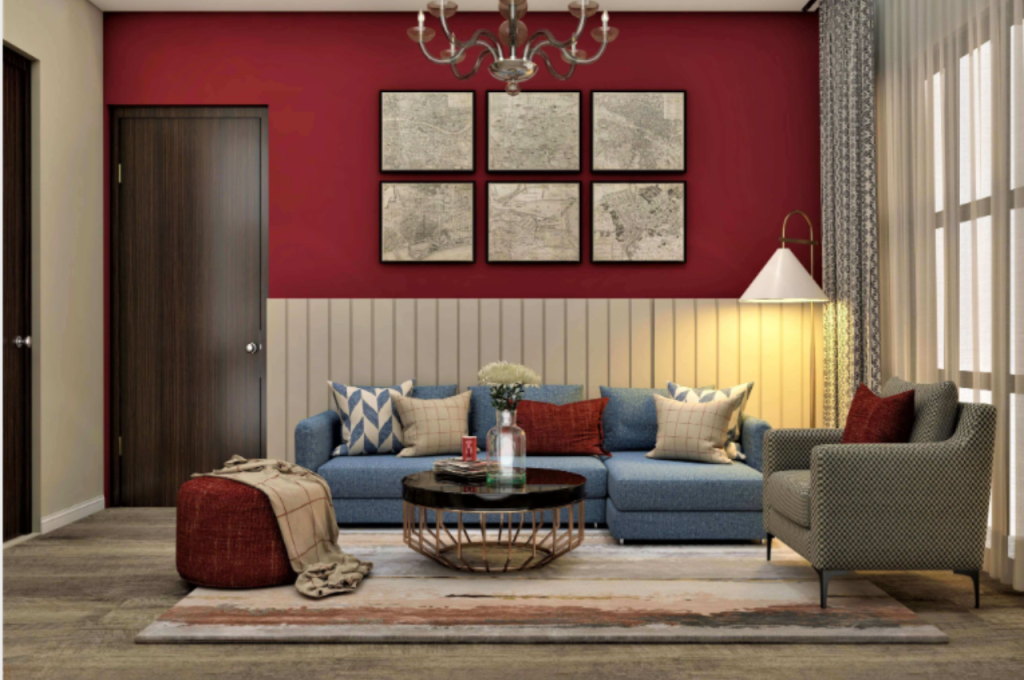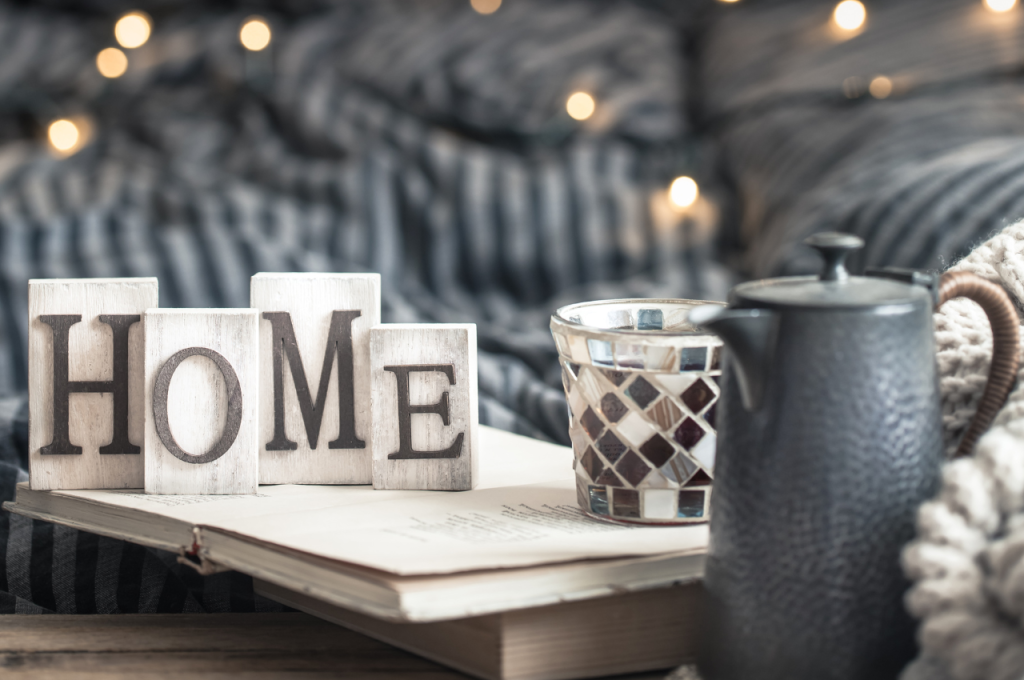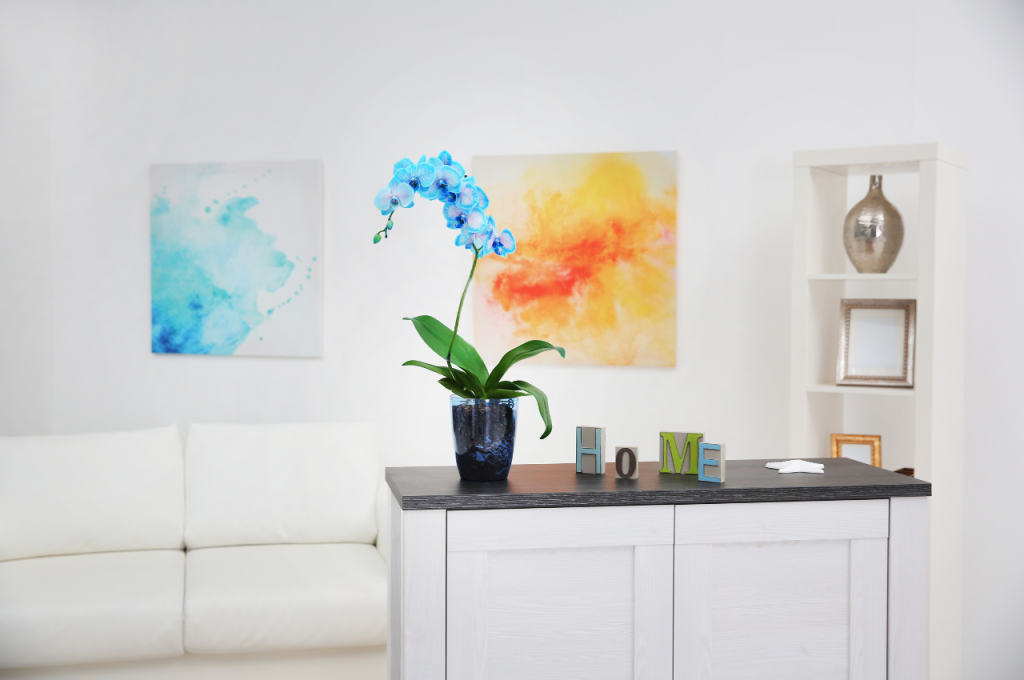To plan home decor, start by setting a budget and determining a style that fits your personality and lifestyle. Home decor plays a vital role in creating a warm and inviting space that reflects your personality.
Whether you’re moving into a new home or updating your current space, planning your home decor can seem overwhelming. However, with the right approach, you can make the process easy and enjoyable. The key to planning a successful home decor is to start by setting a budget and determining a style that fits your personality and lifestyle.
Several factors, such as color schemes, furniture, and accessories, go into home decor planning. Therefore, taking time to plan and organize your ideas will ensure a cohesive and harmonious look. This article will highlight the tips and steps to plan your home decor successfully.
Determine Your Style
Home decor is a reflection of your personality, and it is not just about making the home look good. It is about creating a sense of comfort, a feeling of belonging to a space, and making it your own. Before you start planning your home décor, it is essential to determine your style. This will help you create a cohesive and harmonious space that reflects your taste.

Assess Your Preferences
The first step in determining your style is to assess your preferences. Ask yourself what kind of home decor makes you feel good and happy. Is it traditional or contemporary, minimalist or eclectic? Look for inspiration from different sources, such as design blogs, magazines, and social media platforms like Pinterest and Instagram. A great way to get started is to create a mood board with pictures of home decor that you love.
Identify the Key Elements
Once you have a clear idea of your preferences, identify the key elements that define your style. These could be color schemes, materials, patterns, or themes. For example, if you prefer a rustic style, you might want to use natural materials such as wood, stone, and metal, and stick to earthy tones like browns, greens, and blues. On the other hand, if you prefer a modern look, you might opt for clean lines, glossy finishes, and bold colors.
Here are some key elements to consider:
| Element | Description |
| Color | Select a color scheme that reflects your style and personality. |
| Materials | Choose materials that complement your style, such as wood, metal, or leather. |
| Patterns | Select patterns that accentuate your style and make a statement. |
| Theme | Choose a theme that reflects your personality, such as nautical, vintage, or bohemian. |
Identifying the key elements of your style will guide you in choosing the right pieces of furniture, accessories, and decorative items. Remember, there are no set rules for home décor. It is all about expressing yourself and creating a space that makes you happy.
Now that you have identified your style, you are ready to start planning your home decor. In the next section, we will look at how to create a budget and plan your space.
Consider Functionality and Layout
To create cohesive and visually appealing home decor, it’s essential to consider functionality and layout. The way you arrange furniture and decorative items in a space can impact both its usefulness and aesthetic appeal. To help, we’ve put together some actionable tips to guide your home decor planning process.
Assess the Space
Before you begin decorating, assess the space you want to work with. Determine the room’s size, its dimensions, and any unique features that might impact your layout decisions. Additionally, consider any natural light sources, such as windows and doors, and how they impact the room’s overall lighting.
Consider Traffic Flow
When planning your home decor, take into account the room’s traffic flow. Think about where people tend to walk through the room and arrange your furniture accordingly. You’ll want to avoid any potential traffic jams that can hinder movement throughout the space.
Make the Most of Existing Features
If your space comes with unique or standout features, make sure to highlight them in your home decor. For example, if your living room has a beautiful fireplace, arrange your furniture to draw attention to it. Likewise, consider any unique architectural elements, like crown molding or statement windows, when planning your layout.
Furthermore, be sure to make the most of any existing features. For example, if you have a small living room, placing a mirror strategically can make the space appear larger than it is. Alternatively, using decorative baskets for storage can add storage space without taking up any additional square footage.
Set A Budget
Setting a budget is an essential part of planning your home decor. Without a budget, it’s easy to stray off course and overspend. By setting a budget, you can identify what you can and cannot afford, which will help you make informed decisions about your home decor project.
Determine the Scope of the Project
Before setting a budget for your home decor project, determine the scope of the work you want to do. Are you simply looking to refresh a room with a few new pieces of furniture, or are you planning a complete overhaul of your entire home? The size and complexity of the project will impact your budget, so it’s important to be realistic about what you can accomplish.
Research Costs of Resources and Services
Once you have a clear idea of the scope of your project, it’s time to research the costs of the resources and services you’ll need to bring your vision to life. For example, if you’re planning a kitchen renovation, research the costs of countertops, cabinets, and appliances. You should also research the costs of any professional services you’ll need, such as a contractor or interior designer.
| Resource/Service | Estimated Cost |
| New couch | $800 |
| Paint and supplies | $150 |
| Contractor | $5,000 |
Consider DIY Options
If you’re working with a tight budget, consider DIY options for your home decor project. While some projects may require professional help, others can be accomplished with a little creativity and elbow grease. For example, instead of buying new furniture, consider repurposing old pieces with a fresh coat of paint or new upholstery. Not only will this save you money, but it will also add a unique, personalized touch to your home.
- Repurpose old furniture with a fresh coat of paint or new upholstery
- Learn how to sew your curtains or pillowcases
- Create your artwork or wall decor
By setting a budget for your home decor project, determining the scope of the work, researching the costs of resources and services, and considering DIY options, you can achieve your vision for your home without breaking the bank.
Choose A Color Scheme
Choosing the perfect color scheme for your home decor can be a bit of a daunting task, but it is an essential element that can completely transform your living space. Your color scheme sets the tone for your entire design theme and creates a harmonious environment that reflects your personality. Here are some tips on how to choose the right color palette for your home decor.

Consider the Mood You Want to Create
The first step in picking a color scheme is to decide what kind of mood you want to create in your living space. What kind of atmosphere do you want to establish? Do you want to create a cozy, warm, and inviting feeling, or do you prefer a bright, energizing vibe? The answer to this question will depend on your style and preferences.
For example, if you want to create a calm and relaxing atmosphere, go for muted and soothing colors. On the other hand, if you want to make a bold statement, choose bright and vivid hues. Keep in mind that colors can evoke different emotions, so choose wisely according to the feeling you want in the room.
Take Inspiration from A Focal Point
If you’re struggling to choose a color scheme, take inspiration from a focal point in your room. This could be a statement rug, a painting, or a throw pillow that you love. Take a close look at the colors in the focal point and choose one or two dominant colors that will serve as the base of your palette and then add complementary colors to create a harmonious look.
Create Interest With Texture and Patterns
Finally, it’s essential to add interest to your color scheme with textures and patterns. Mix and match materials like wood, metal, and fabric to add depth and dimension to your living space. Adding patterns to your decor is an excellent way to create visual interest. Stripes, polka dots, and paisleys all can add a sense of playfulness to the environment, while geometric and abstract patterns can make your design feel more sophisticated.
Decide On Furniture and Accessories
To plan home decor effectively, it’s important to decide on furniture and accessories that suit your style and budget. Consider the room’s purpose and layout, and select pieces that enhance its functionality while reflecting taste. With these tips, you can create a cohesive look and feel throughout your home.
Your furniture and home accessories play a significant role in the overall look and feel of your living space. They reflect your personality and add character to your home. When it comes to decorating your home, deciding on furniture and accessories is a crucial step. Here are some tips on how to do it right:
Select Pieces That Fit the Style and Function
When selecting furniture and accessories, it is essential to consider both style and function. Your furniture should be comfortable, while your home accessories should be decorative and functional. Choose pieces that match your home’s overall style and color scheme. If your home has a minimalist decor, then choose furniture with clean lines and neutral colors. For a more traditional look, choose pieces with ornate details and rich colors.
Use Statement Pieces to Draw Focus
Adding a statement piece or two to your living space can help draw attention to specific areas or decor themes. These pieces will be the focal point of your room. You can choose bold-colored furniture or add a large painting or sculpture to your living room to grab attention. For example, if you want to give your living room a modern touch, you can add a geometric rug or a metallic lamp. Statement pieces will make your decor look dynamic and unique.
Accessorize With Purpose
Accessorizing is the final touch to your home decor. It is essential to choose your accessories wisely and with purpose. Your accessories should complement your furniture and accent your decor. You can use accessories to add color, and texture, or to highlight a specific area in your room. For example, use decorative pillows and throws to add texture to your sofa or accent chairs. Use rugs to define an area and add color to your decor.
Hang Art and Decor
Art and décor are essential elements of home décor. Hanging the right pieces of art and décor can enhance the look and feel of your home. Here are some tips to guide you when hanging art and décor in your home.
Select Pieces that Complement the Style and Color Scheme
- Match your wall décor with the color scheme of your room.
- Choose pieces that complement the style of your existing furniture and accents.
- Opt for interesting textures and finishes to add depth to the walls.
- Choose unique or bold pieces of art or décor to create a striking focal point.
Consider Scale and Composition
- When choosing the size of your wall décor, consider the scale of your room.
- Small pieces may get lost in a large room, but larger pieces might overpower small spaces.
- Create a gallery wall, mixing different sizes and shapes, to achieve balance and harmony.
- Be mindful of the center of the artwork, ensuring it is at eye level when standing or sitting in the room.
Vary Types and Placements
- Mix and match different wall décor types to add more visual interest.
- Include framed artwork, mirrors, shelves, or other statement pieces.
- Don’t be afraid to break design rules, like hanging artwork off-center, or creating a mismatched gallery wall.
- However, ensure that the pieces follow a consistent theme or color scheme to avoid a cluttered look.
When it comes to home décor, hanging art and décor pieces is an easy and effective way to elevate your space. By following these simple tips, you can create a personalized, stylish, and cohesive look for your home.
Add Lighting and Greenery
Adding lighting and greenery to your home is a great way to enhance your décor and create a peaceful ambiance. Natural elements such as plants can add life and texture to your space, while layered lighting can create an atmosphere and bring out the best in your decor. Here are some tips to help you add lighting and greenery to your home:
Layer Lighting to Create an Atmosphere
When it comes to lighting, it’s important to think about more than just the overhead lights. Layering your lighting allows you to create a variety of atmospheres throughout your space. Consider adding table lamps, floor lamps, or even string lights to create a warm, inviting glow. You can also use dimmer switches to adjust the brightness of your bulbs for even more control over the ambiance.
Bring in Natural Elements for Texture and Life
Plants and flowers can bring a burst of color and texture to any space. If you’re not confident with your green thumb, start with low-maintenance plants like succulents or snake plants. If you have a green thumb, consider adding larger plants like fig trees or birds of paradise. You can even create a living wall with several smaller plants arranged on a shelf. Adding natural elements like wood or woven baskets can also bring a touch of the outdoors into your space.
Ensure Functionality With Task Lighting
While layered lighting is important for the atmosphere, it’s also important to have functional task lighting in certain areas of your home. In your workspace or kitchen, make sure you have bright, direct lighting to help you see what you’re doing. In your reading nook, add a floor lamp or table lamp with a focused beam of light to help you read without straining your eyes.
With these tips, you can easily add lighting and greenery to your home to create a warm, inviting space that’s perfect for relaxing, working, and everything in between.
Personalize and Refresh Over Time
Personalizing and refreshing your home decor over time is a great way to keep your space feeling fresh and new. Customizing your space with your favorite personal items can make it feel like home while keeping up with the latest color trends and rotating your decor for seasonal changes can give your home a new look and feel.

Display Personal Items
Displaying personal items in your home is a great way to personalize your space. Family photos, artwork, and unique decor pieces can make your home feel homier and more inviting. Consider creating a gallery wall with your favorite artwork or displaying your favorite possessions on a bookshelf or mantel. By incorporating your style into your decor, you can create a space that is uniquely yours.
Rotate Decor for Seasonal Changes and Updates
Rotating your decor for seasonal changes and updates is a great way to keep your space feeling fresh. Consider swapping out your throw pillows, blankets, and curtains for seasonal colors and patterns. You can also switch up your wall decor and knick-knacks to reflect the changing seasons. By keeping your decor up-to-date with the latest trends, you can ensure that your home always feels modern and new.
Update the Color Palette With New Trends
Keeping your color palette up-to-date with new trends is an easy way to refresh your home decor. By incorporating the latest color trends into your decor, you can ensure that your space always feels current and modern. Consider adding pops of trendy colors with accent pillows, curtains, and rugs. You can also update your wall colors to keep up with the latest trends.
Personalizing and refreshing your home decor over time can be an ongoing project, but by incorporating your style and keeping up with the latest trends, you can create a space that feels new and exciting. By displaying your favorite personal items, rotating your decor for seasonal changes and updates, and updating your color palette with new trends, you can create a space that is uniquely yours.
Conclusion
Planning home decor is a crucial step in creating a comfortable and personalized living space. By considering your style, budget, and needs, as well as implementing practical design elements, you can achieve an aesthetically pleasing and functional home. Remember to also take into account the latest home decor trends and not be afraid to experiment with different colors, patterns, and textures.
With these tips, you can create a beautiful home that reflects your unique personality and taste. Happy decorating!

